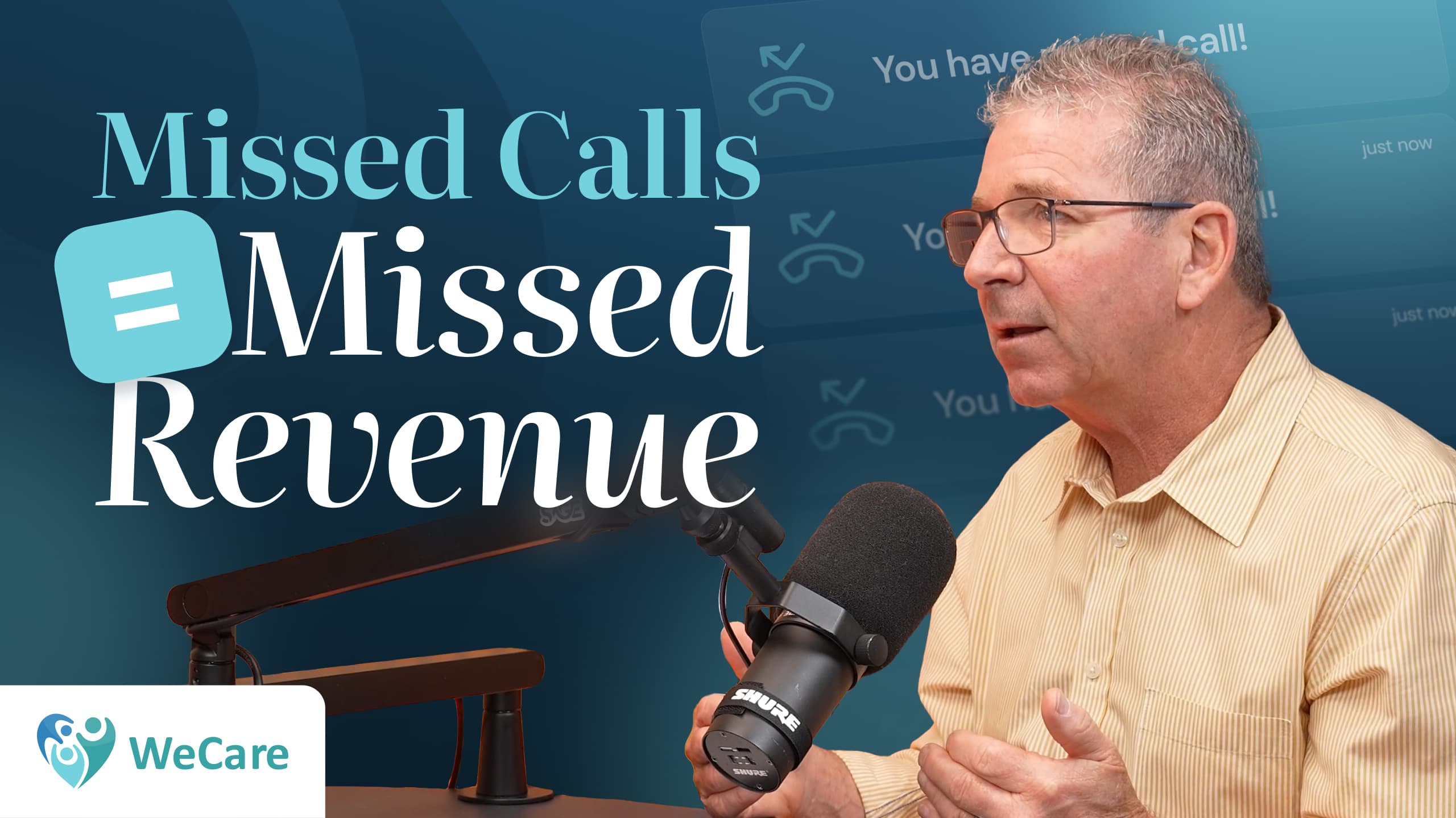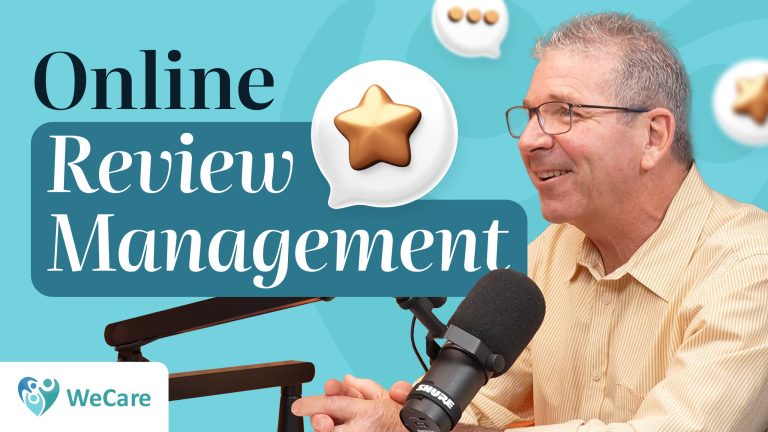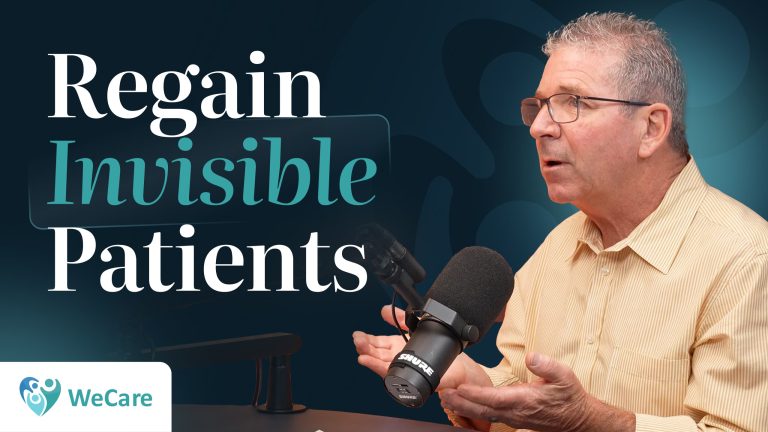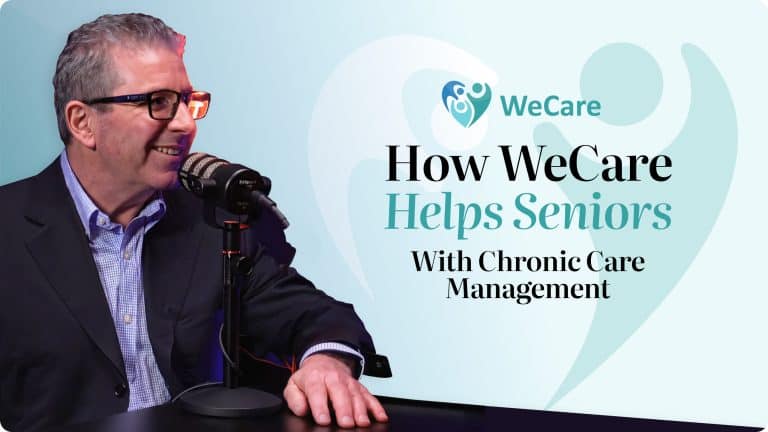Missed calls in your medical practice represent more than just inconvenience—they’re silent revenue killers that can destroy patient relationships and damage your clinic’s reputation. The harsh reality? Every unanswered call could be costing your practice revenue and referrals.
The crux of the issue lies in completing what healthcare professionals call the “circle of care.” Many clinics fail to close the loop between patient and provider, leaving a critical gap in communication that drives patients away. This incomplete circle doesn’t just affect patient satisfaction—it creates a cascading effect of lost revenue, damaged relationships, and missed opportunities for growth.
The Hidden Cost of Missed Patient Calls
Picture this scenario: It’s 10:00 AM, and Mrs. Johnson calls your clinic with a prescription question. The phone rings, but no one answers. At 11:30 AM, she calls back about the same issue—still no response. By 1:00 PM, when she calls for the third time, she’s furious. Her frustration level has escalated from mild concern to outright anger, and your clinic has now potentially lost a patient.
This pattern plays out in medical practices across the country every single day. Healthcare call management failures create a domino effect: one missed call leads to patient dissatisfaction, which leads to patient departure, which leads to lost revenue and negative word-of-mouth referrals.
The phrase “ring ring, revenue gone” perfectly captures this reality. When practices can’t pick up the phone, they lose the patient. When they lose the patient, they lose all the revenue associated with that individual and their valuable referrals.
The Invisible Patient Problem That Hurts Clinics
The invisible patient problem is one of the biggest challenges facing medical practices today. Unlike other operational issues that create obvious problems, missed calls from unseen patients often go unnoticed until it’s too late.
Here’s what makes this problem particularly insidious: dissatisfied patients don’t typically complain—they simply disappear. When a patient calls two or three times in a day to get their needs met and can’t get through, they don’t schedule a meeting to express their frustration. They just find another healthcare provider.
Most practices have no idea how many patients they’re losing to communication failures. A comprehensive analysis often reveals shocking statistics—hundreds, sometimes thousands of patients who visited the clinic in the past but haven’t returned in over a year. These “disappeared” patients represent massive lost revenue that most practices don’t even realize they’re missing.
Consider the lifetime value of a single patient to your clinic. Multiply this number by the hundreds of patients who slip through communication cracks, and the financial impact becomes staggering.
When Technology Becomes the Problem, Not the Solution
The healthcare technology landscape is filled with sophisticated solutions promising to revolutionize patient retention solutions. However, sometimes the most advanced systems create more problems than they solve.
One clinic invested substantial resources in an extremely sophisticated answering service designed to handle all their communication challenges. Unfortunately, the technology was so complicated that neither the clinic staff nor the patients could figure out how to use it effectively.
The solution? Replacing the complex system with something remarkably simple: live human beings who answer the phone, listen to patients, take detailed notes, and follow up promptly. This human-centered approach proved far more effective than any technological solution.
This example illustrates a crucial principle in healthcare communication: patients want to talk to people, not navigate through endless automated menus. While technology can enhance healthcare delivery, it should never replace the fundamental human connection that patients seek when they’re concerned about their health.
The Power of Human Connection in Healthcare
Live call answering service solutions that prioritize human interaction address one of the most fundamental needs in healthcare: the desire to be heard and understood. When patients call with health concerns, they’re often anxious, confused, or in pain. The last thing they want is to wrestle with an impersonal automated system.
Patients take communication failures personally. They don’t see missed calls as operational challenges—they interpret them as signs that they’re not valued as individuals. Many patients report feeling like “just a number” rather than a person when their calls go unanswered.
The emotional impact of communication failures extends far beyond the immediate interaction. Patients remember poor communication experiences for years. These memories create lasting negative impressions that can be difficult to overcome.
Building what the healthcare industry calls “stickiness”—the emotional and practical connections that keep patients loyal to a practice—requires consistent, empathetic communication. The more sticky a practice becomes through positive relationship-building, the happier patients become. Happy patients continue coming to the clinic and, more importantly, they tell their friends about their positive experiences.
Care Coordination Technology: Beyond Just Answering Calls
Effective care coordination technology not only addresses patients’ immediate questions but also guides them through their entire healthcare journey.
Traditional healthcare communication often involves giving patients phone numbers and hoping they’ll successfully navigate on their own. For example: “Here’s the lab’s number—call them about your results” or “Contact the specialist’s office to schedule your referral appointment.”
This approach places an enormous burden on patients who are already dealing with health concerns. They become responsible for coordinating multiple aspects of their care, often while managing pain, anxiety, or other health-related challenges.
A more effective approach involves health coaches who solve problems in real-time rather than simply providing phone numbers. Instead of telling a patient to call the pharmacy about a prescription issue, the health coach makes the call with the patient on the line, connects all the necessary dots, and resolves the issue immediately.
This hands-on approach creates several important benefits:
- Patients receive immediate resolution to their concerns
- Healthcare providers can be confident that important follow-up actions are completed
- The risk of patients falling through communication cracks is dramatically reduced
- Patient satisfaction increases significantly when they feel supported throughout their healthcare journey
Addressing Social Determinants of Health Through Communication
Modern healthcare increasingly recognizes that effective patient care extends beyond clinical treatment to the social determinants of health—the environmental and social factors that significantly impact health outcomes. Patient retention solutions must account for these broader patient needs.
Social determinants of health refer to patients’ access to everything that surrounds their world: transportation, food security, housing stability, and basic resource navigation. For many patients, especially those covered by Medicaid, these factors can be just as important as clinical care in determining health outcomes.
Effective healthcare communication services function as concierge services, helping patients connect with whatever resources they need to maintain their health and well-being. This might involve:
- Arranging transportation to medical appointments
- Connecting patients with food assistance programs
- Helping navigate insurance and financial assistance options
- Coordinating multiple healthcare providers and specialists
- Providing guidance on medication access and affordability
Transportation represents a particularly common challenge. Patients can have access to the best doctors in the world, but if they can’t physically get to their appointments, the quality of medical care becomes irrelevant. Many healthcare systems offer free or subsidized transportation services, but patients often don’t know these resources exist or how to access them.
By facilitating connections between patients and these essential resources, healthcare communication services help create the stability and structure that enables patients to focus on their health and recovery.
Integration: More Than Just an Add-On Service
Effective healthcare call management requires deep integration with existing clinic operations rather than functioning as a separate, disconnected service. The most successful patient communication solutions work as extensions of the clinic’s front desk, with full access to patient records, scheduling systems, and operational workflows.
This integration enables several critical capabilities:
- Real-time access to patient medical records and history
- Ability to schedule appointments directly in the clinic’s system
- Authority to take action on behalf of the clinic rather than simply taking messages
- Seamless coordination with existing staff and workflows
When communication services operate in isolation from clinic systems, they become bottlenecks rather than solutions. Messages get lost in translation, important details are missed, and patients experience the same frustrations they encountered with the original communication problems.
True integration means that when patients call, they’re not reaching an answering service—they’re reaching a member of the healthcare team, someone who can take immediate action to address their needs.
The Team-Based Approach to Healthcare Delivery
Running a successful medical practice requires recognition that healthcare delivery is fundamentally a team effort.
The patient experience begins the moment someone calls the clinic and extends through their entire healthcare journey: scheduling appointments, checking in, seeing the provider, and following up on treatment recommendations.
Real-World Impact: What Patient Surveys Reveal
Each touchpoint in this journey represents an opportunity to build or damage the patient relationship. Research consistently shows that patient feedback often focuses more on non-clinical interactions than on the actual medical care they received. Patients evaluate practices based on:
- How long they waited for their calls to be returned
- Whether front desk staff were friendly and helpful
- How efficiently their appointments were scheduled
- Whether they felt heard and understood during interactions
- How well their questions and concerns were addressed
These seemingly “minor” interactions have major impacts on patient satisfaction and loyalty. In fact, patients frequently mention specific staff members who made positive impressions through friendly, helpful interactions.
These personal connections become powerful differentiators that influence patient loyalty and referral behavior. Ultimately, a patient might receive excellent clinical care from a skilled physician, but if they struggled with communication issues throughout the process, their overall experience will be negative.
Understanding these patient priorities helps healthcare practices focus their improvement efforts on areas that will have the greatest impact on patient satisfaction and retention.
The Financial Impact: Quantifying Lost Revenue
The financial implications of missed calls in medical practice extend far beyond individual appointment cancellations. Consider the comprehensive revenue impact:
Immediate Revenue Loss: Each missed call potentially represents lost appointment revenue and other immediate income opportunities.
Long-term Patient Value: The lifetime value of healthcare relationships means that losing a single patient can cost practices tens of thousands of dollars over time.
Referral Revenue: Satisfied patients generate referrals, while dissatisfied patients often share negative experiences. The referral impact of communication failures multiplies the financial damage.
Reputation Management: Poor communication experiences generate negative online reviews and negative word-of-mouth that can damage practice reputation and make patient acquisition more difficult and expensive.
Staff Efficiency: When communication systems fail, clinical and administrative staff must spend additional time addressing patient frustrations, reducing overall operational efficiency.
Measuring Success: Key Performance Indicators
Effective patient retention solutions require ongoing measurement and optimization. Key metrics for evaluating communication performance include:
Call Answer Rates: What percentage of incoming calls are answered by live staff rather than going to voicemail?
Response Time: How quickly are voicemails and messages returned to patients?
Patient Satisfaction Scores: How do patients rate their communication experiences with the practice?
Patient Retention Rates: What percentage of patients continue receiving care at the practice over time?
Referral Generation: How many new patients come to the practice through existing patient referrals?
Revenue per Patient: Are communication improvements correlating with increased patient engagement and revenue?
Regular monitoring of these metrics helps practices identify communication problems before they become major revenue losses and patient relations disasters.
Implementation Strategies: Building Better Communication Systems
Improving healthcare call management requires systematic approaches that address both technology and human elements:
Staff Training: Ensure all team members understand the revenue and relationship impacts of communication quality. Train staff on empathetic communication techniques and efficient problem resolution.
Technology Integration: Implement communication systems that integrate seamlessly with existing patient management and scheduling platforms.
Process Documentation: Create clear protocols for handling different types of patient calls and inquiries.
Quality Monitoring: Regularly review call handling performance and patient feedback to identify improvement opportunities.
Resource Allocation: Ensure adequate staffing levels to handle patient communication volume without creating delays or missed calls.
The Future of Healthcare Communication
As healthcare becomes increasingly consumer-focused, communication quality will continue to be a major competitive differentiator. Patients have more healthcare choices than ever before, and they’re willing to change providers based on communication experiences.
Practices that invest in excellent communication systems position themselves for long-term success.
Completing the Circle of Care
Missed calls in medical practice represent one of the most significant and addressable challenges facing healthcare providers today. The solution isn’t necessarily more sophisticated technology or complex systems—it’s often as simple as ensuring that when patients call, real people answer and take immediate action to address their needs.
Completing the circle of care means creating seamless communication loops that connect patients with providers throughout the entire healthcare journey. It means treating every phone call as a valuable opportunity to build relationships, solve problems, and demonstrate the practice’s commitment to patient care.
The practices that master healthcare communication will be the ones that thrive in an increasingly competitive healthcare marketplace. They’ll retain more patients, generate more referrals, and build the kind of reputation that drives sustainable growth.
The question isn’t whether your practice can afford to invest in better communication systems—it’s whether you can afford not to. With each missed call representing potential lost revenue and damaged relationships, the cost of maintaining poor communication far exceeds the investment required to fix it.
Take action today to evaluate your practice’s communication performance and implement solutions that will complete your circle of care. Your patients—and your bottom line—will thank you for it.
Frequently Asked Questions
1. How do missed calls affect patient retention in a medical practice?
Missed calls directly impact patient retention by creating frustration, breaking trust, and signaling that the clinic is unresponsive. Most patients won’t complain—they’ll simply leave and find care elsewhere, often without warning.
2. What is the financial cost of missed calls in a clinic?
Each missed call can result in lost appointment revenue, long-term patient value, and future referral income. Over time, the cumulative impact may cost a practice tens or even hundreds of thousands of dollars annually.
3. Why don’t automated phone systems solve the missed call problem?
Automated systems often lack the empathy and flexibility patients expect. Many patients report feeling like “just a number” and find these systems confusing, impersonal, and difficult to navigate, leading them to abandon calls altogether.
4. What do patients want when they call a medical practice?
Patients want to speak with a real person who listens, understands, and resolves their issues. Human interaction provides emotional support, helps reduce anxiety, and strengthens patient-provider trust.
5. How can clinics prevent patients from slipping through communication cracks?
Implement a live call answering service integrated with clinic systems. Ensure that every patient reaches a knowledgeable team member who can access records, schedule appointments, and take action immediately.
6. What kind of technology improves communication without alienating patients?
Technology that supports—not replaces—human interaction works best. Tools that allow real-time access to patient records, seamless appointment scheduling, and care coordination are essential, but they must be paired with empathetic human communication.
7. What are some key performance indicators (KPIs) for evaluating communication success?
Important KPIs include call answer rate, response time to voicemails, patient satisfaction scores, patient retention rates, referral generation, and revenue per patient.
8. How can healthcare staff be trained to improve communication?
Train staff on empathetic listening, efficient call handling, and clear communication protocols. Emphasize the business and relationship costs of missed calls to build accountability and awareness.
9. What role does care coordination play in preventing missed opportunities?
Effective care coordination ensures patients aren’t left to manage complex health tasks alone. Health coaches and live staff can help patients navigate prescriptions, lab results, specialist referrals, and transportation, reducing drop-offs in care.
Yes. Helping patients with transportation, food access, housing, and insurance navigation creates the foundation for reliable healthcare access and reduces barriers that often result in missed appointments and follow-up calls.



